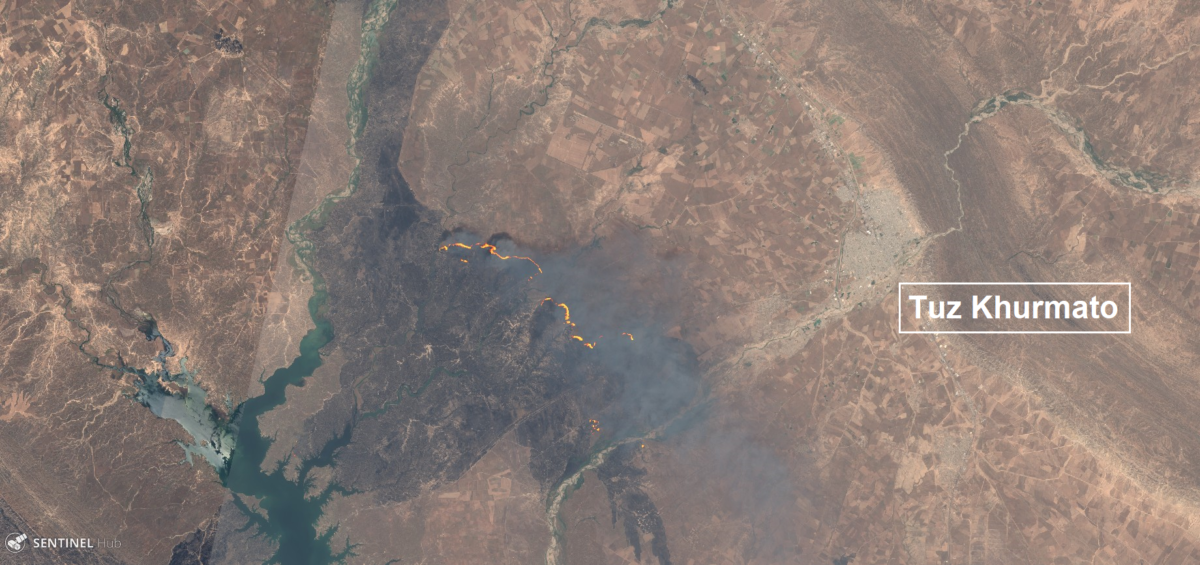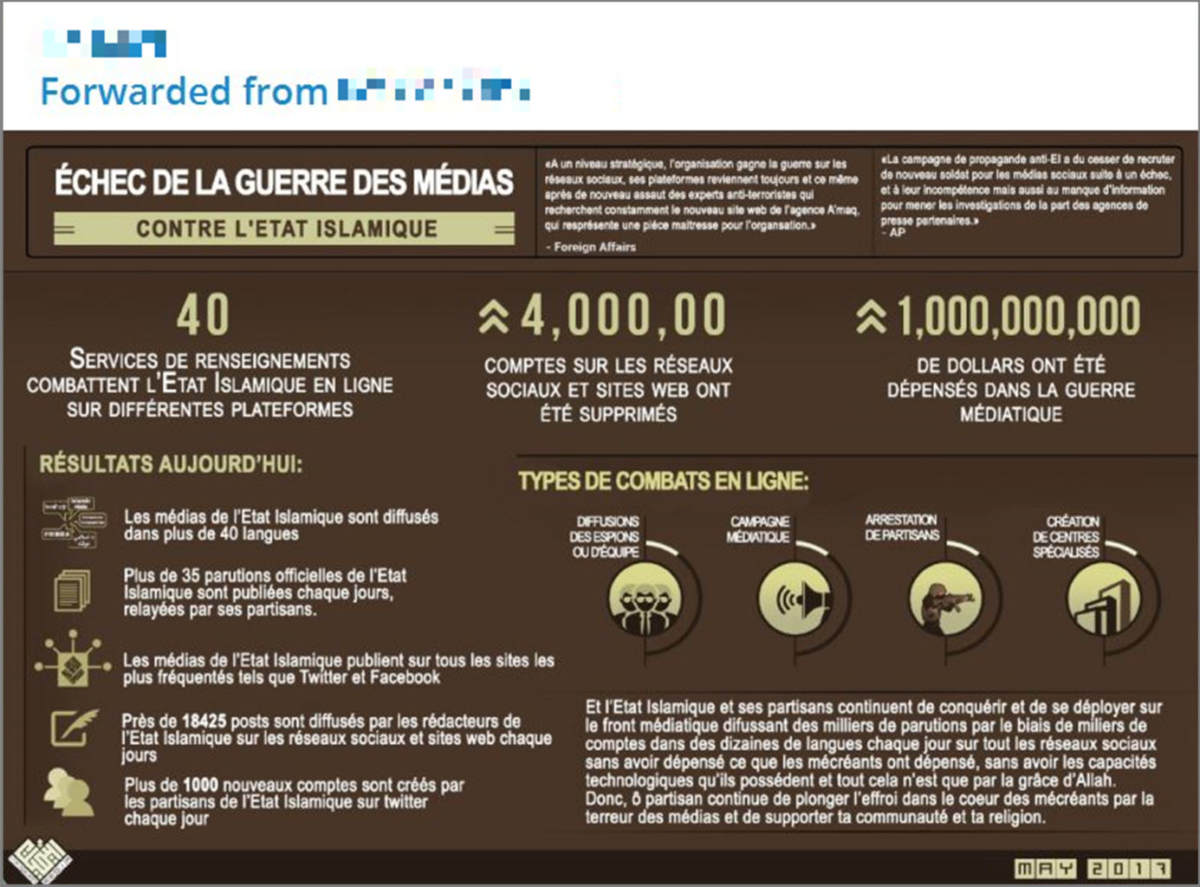Tip of the Spear? Meet ISIS' Special Operations Unit, Katibat al-Battar
“Serpents, thirst, heat, and sand … Libya alone can present a multitude of woes that it would beseem men to fly from.”
-Roman poem.
On a mild November night last year, nine EU citizens roamed the streets of Paris with guns and explosives, murdering and injuring hundreds of civilians. In the days and weeks afterward, France declared emergency laws, Britain voted to expand the bombing of ISIS in Syria and ISIS supporters launched their own social media response on Twitter with #PrayforRaqqah.
But many of the most important questions around Paris remain unanswered. Where did these men come from? Were they part of a group? Who instructed them to commit these acts?
The following investigation reveals that a little-known group of battle-hardened and highly capable Libyans are the common factor behind many of the major terrorist attacks in Europe and North Africa since 2014.
Meet Katibat Al-Battar Al-Libi
When groups of Libyans involve themselves in foreign jihads, the West normally suffers. From the jihad in 1980s Afghanistan, through to running al-Qa’ida in Pakistan in the 2000s, Libyans fighters have played a significant role in most recent jihadist conflicts. As recently as 2007, the US Naval Academy at West Point released a study of seized Islamic State personnel files, which were found in a US Army raid in Iraq. To the author’s surprise, a disproportionate number of fighters were Libyan, and specifically from the town of Dernah, in the northeast Libya. Almost 20% of the Islamic State’s fighters in Iraq were Libyan, and of that figure, over 60% of them were from Dernah. According to the study, the city and its surrounds contained ‘the greatest concentration of jihadi terrorists anywhere on the planet’.
Unsurprisingly then, in 2012 as the Arab Spring caught fire, entire brigades of fighters from Dernah were among the first foreign fighters to arrive in Syria. Rather than immersing themselves with ISIS or Jabat al-Nusra, the Libyans created their own unit, Katibat al-Battar al-Libi, with the catching slogan ‘بالذبح جئناكم’ or; ‘We came to slaughter you’. Battar is a reference to one of the Prophet’s swords – known for its impact on the neck of his enemies. The group’s inaugural 2012 video is available here. Many of the Libyan members of KBL were seasoned veterans of Iraq and Afghanistan; battle-hardened fighters.
Over time, as ISIS’ power grew in Syria, KBL sensibly pledged allegiance to ISIS leader Abu Bakr Al-Baghdadi. With its cadre of experienced fighters, KBL began fighting for the ISIS cause in Syria and Iraq. In January 2015, KBL captured and brutally killed dozens of Peshmerga. Arabic media reports in July 2015 that 350 KBL fighters supported the ISIS presence in Baiji, Iraq, where a prominent leader, Abu Dujana Al-Libi was killed.
Blogs holding ISIS content indicate that KBL was one of the first groups in Syria to participate effectively in both fighting and relief work, playing a fundamental role in ISIS’ capture of Taftanaz airport and Khan Tuman. Various reports estimate KBL’s strength in Syria from the low hundreds to over 1400. The group began life as a semi-autonomous commando unit fighting under the overall ISIS banner, but has clearly since expanded its role to include relief work in Syria and mass training camps in Libya (see below).
The group’s role as an elite unit of ISIS would have huge consequences for the Syrian war, but also for Europe, Libya and North Africa.
Europeans mix with KBL
In 2013 and 2014, European fighters began travelling to Syria in larger numbers. With its sterling reputation in Syria growing, KBL became an attractive group for Francophone fighters, specifically Belgians, French and Tunisians. Although the exact reason is unknown, one explanation for Belgians joining KBL is language; many Belgian-Moroccans are from eastern Morocco, whose Maghrebi dialect is very similar to Libyan Arabic.
During 2014, KBL records indicate a considerable number of Belgians died fighting for KBL in Syria. In addition to the domestic campaign, it appears that during 2014, KBL decided to expand its operations to Europe. One of the most prominent Belgians within KBL at the time was Abdelhamid Abaaoud. In order to evade the authorities, Abaaoud faked his own death in a published list of KBL martyrs, and he appears in social media with a number of KBL individuals during 2014.
Abaaoud was at the centre of a string of terrorist plots in Europe, before the Paris attacks in November 2015. It is likely that KBL introduced the concept of ‘Inghimasi’ operations to Abaaoud, and it is possible, if not probable that KBL – via Abaaoud – assisted, sponsored or directed at least four terrorist attacks in Europe in 2014-2015;
- The January 2014 Brussels Jewish Museum attack
- The January 2015 Failed Verviers plot (two of the attackers were pictured with the group before the cell was disrupted in early 2015).
- The Thalys Train attack
- Three other planned attacks in France since Spring 2015
- The Paris attacks of November 2015
What is clear is that a considerable number of Europeans, Tunisians and Moroccans joined Katibat al-Battar as the group’s legend in Syria grew. Many of these fighters died in Syria or Iraq, fighting for Islamic State. However, in hindsight, the mixing of EU passport holders with perhaps the most violent, ruthless and capable group of Libyans in Syria dramatically escalated the terrorist threat to Europeans, both at home and abroad.
From Libya to Syria, and back again
Whilst KBL’s Belgians were busy in Syria plotting internal and external attacks, dozens of experienced KBL fighters returned to Dernah in Libya, creating the first ISIS province outside of Syria and Iraq – Wilayat Barqa. Some KBL fighters reorganised themselves under the Islamic Youth Shura Council. An ISIS delegation from Raqqah, including the Yemeni Abu Bara al-Azdi and the Saudi Abu Habib Al-Jazrawi visited IYSC in September 2014 and collected allegiances from IYSC aligned fighters.
KBL’s headquarters are now believed to be in Dernah, with secondary branches in Syria and Iraq. Online videos of KBL fighters generally indicate possession of small arms, mortars and vehicle mounted anti-aircraft. A KBL affiliated Facebook group has also been identified; the group’s icon is Jihadi John.
Reports indicate that the group runs training camps in Libya focused on assassinations, mass murder, weapons training and bomb-making. KBL’s is also reported to have an operations room in Dernah for terrorist activities in Tunisia.
According to several sources, the activities of KB are distributed across three teams:
- Guarding IS leaders; this is mostly made up of Tunisian nationals and elements from the dissolved Iraqi Baath regime;
- Liquidation Teams: in charge of assassinating those who refuse to pledge allegiance to Al-Baghdadi; unverified reports point to KBL’s involvement in the killing of Ansar Al-Sharia’s former leader, Mohamed Zahawi;
- Mass Casualty ‘Inghimasi’ Operations: Inghimasi are well-trained terrorists who carries both light arms and explosives and fights until he runs out of ammunition. Though this information cannot be entirely verified, KBL affiliated fighters are thought to have played a role in the Tunisian attacks at the Bardo Museum and in Sousse
(Source: akherkhabaronline.com)
KBL are reportedly actively working in attracting young Tunisians to take part in fighting, following an initial training phase in its Libyan training camps. Nevertheless, the group’s strategies aimed at recruiting Western/European nationals remain ambiguous, particularly following the suspension of its official social media accounts.
The Age of the “Inghimasiyun”
Since joining ISIS, KBL have fostered and grown the concept of the Inghimasi; which is the jihadi equivalent of the kamikaze or the Nazi einsatzgruppen. The concept has gripped ISIS, who now broadcast their Inghimasi as heroes. Whilst there is no smoking gun pointing to KBL’s specific role in ‘Inghimasi’ style attacks at the Brussels museum, Paris, Sousse, the Corinthia hotel or the Bardo Museum in Tunis, it is important to note a) the modus operandi is entirely consistent with KBL’s Inghimasi operations b) many of the operatives were Tunisians and Belgians and c) All of these attacks came after KBL’s arrival in Dernah, in March 2014.
Going forward
One of the most important questions remains unanswered; to what extent are KBL subservient to ISIS, and do they retain a degree of operational autonomy? The evidence suggests KBL, moreso than ISIS, assisted or directed many of the major terrorist attacks in the past few years. Logically, then, from a Western perspective, Katibat al-Battar are the most dangerous unit within ISIS.
Perhaps of most concern to the West is KBL’s freedom to operate in Libya, with its Wilayat Barqa ISIS enclave. Whilst fighting other militias and subject to occasional airstrikes, the group is under far less pressure in Libya than its colleagues in Syria and Iraq. It could be argued ISIS’ Libya branch presents a greater terrorist threat to Europe than its Syrian counterpart: mass training camps, proximity to Europe and the tourist beaches of Africa, and most importantly, operational pedigree – honed during years of conflict in Syria, Iraq and Afghanistan.







